The New Jersey Agricultural Experiment Station at Rutgers University has compiled a database with hundreds of plant species rated by their deer resistance, from “rarely damaged” to “frequently damaged.” In the vine category, only three vines are labeled “seldom damaged,” and there are no “rarely damaged” options.
What’s a gardener to do? Fortunately, most vines grow large enough to be out of reach of deer and need protection only when they are young. But if you want a vine that will retain its leaves and flowers when it’s shorter than 6 feet, the first three options below are probably your best bet. The remaining vines on the list are labeled “occasionally damaged,” so they’re not a bad choice either.
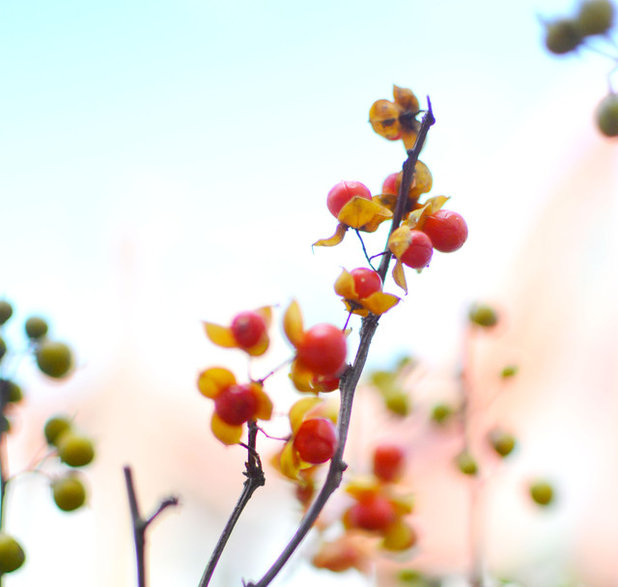
Amy Renea
1. American Bittersweet (
Celastrus scandens)
This twining deciduous vine is native to eastern and central North America and is easily grown in most soils — not to be confused with the highly invasive non-native Oriental bittersweet (
C. orbiculatus). It bears whitish-yellow flowers in summer, followed by the brightly colored fruits for which it is best known, as seen here. The fruit persists into early winter and is often used in floral arrangements. Male and female plants are needed to produce the berries, but the variety ‘Bailumn’ is self-fertile, so only one is required. Caution: All parts of this plant are toxic if eaten by humans.
Where it will grow: Hardy to minus 40 degrees Fahrenheit, or minus 40 degrees Celsius (USDA zones 3 to 9; find your zone)
Light requirement: Full sun
Water requirement: Moderate
Mature size: Up to 25 feet
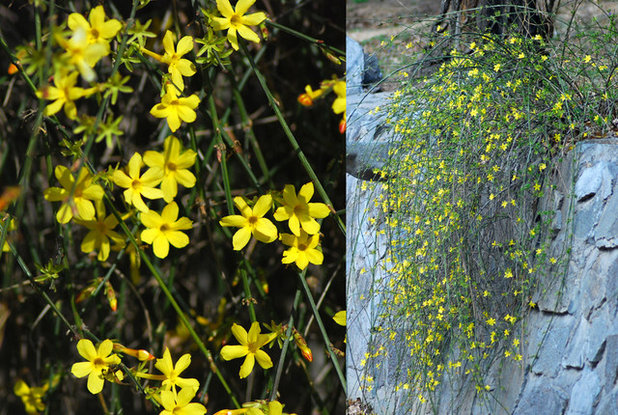 2. Winter Jasmine
2. Winter Jasmine (
Jasminum nudiflorum)
This deciduous woody vine lacks the fragrance of other jasmine flowers, but it makes up for it by blooming in mid to late winter. It’s a carefree plant that thrives with little attention and grows as either a scrambling shrub or an upright vine.
Where it will grow: Hardy to minus 10 degrees Fahrenheit, or minus 23 degrees Celsius (zones 6 to 9)
Light requirement: Full sun
Water requirement: Moderate
Mature size: Up to 15 feet
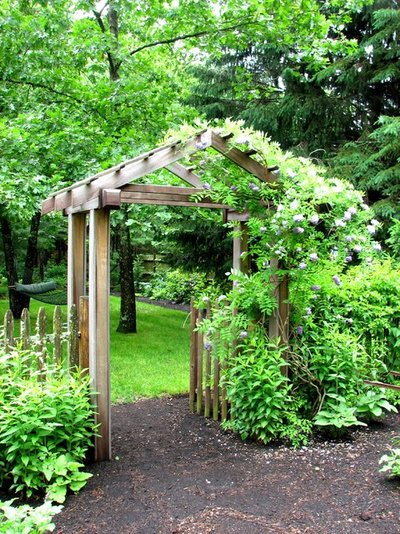
Garden Tech Horticultural Services LLC
3. Wisteria (
Wisteria spp.)
Wisteria’s enormous drooping flower clusters make it one of the most stunning of all flowering vines. The commonly planted Chinese (
W. sinensis) and Japanese (
W. floribunda) species are highly invasive in numerous parts of the country, so be forewarned if you’re considering planting these varieties. These aggressive vines can escape into the wild, where 50-foot vines can easily engulf large trees.
However, there is a native North American variety, the American wisteria (
W. frutescens), shown here, which can be planted without worry. Its flowers are similar to those of its Asian cousins but are not as big — nor are its vines.
Where it will grow: Varies by species
Light requirement: Full or partial sun
Water requirement: Low
Mature size: Varies by species
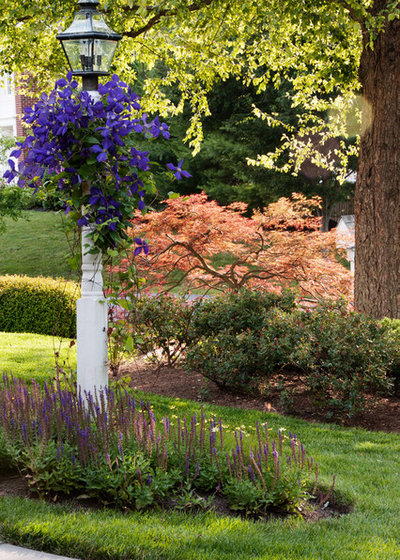
D & A Dunlevy Landscapers, Inc.
4. Clematis (
Clematis spp.)
Clematis is known for its delicate flowers — purple or white are most often seen — as well as its constrained growth habit. Most of the clematises found in nurseries are highly hybridized varieties of Japanese or Chinese origin, but there are native species as well. The native western species (
C. ligusticifolia) and eastern species (
C. virginiana) both have small white flowers. There is an additional species native to New England and the Great Lakes region (
C. occidentalis) that has showier purple flowers.
Where it will grow: Varies by species
Light requirement: Full or partial sun
Water requirement: Moderate
Mature size: Varies by species
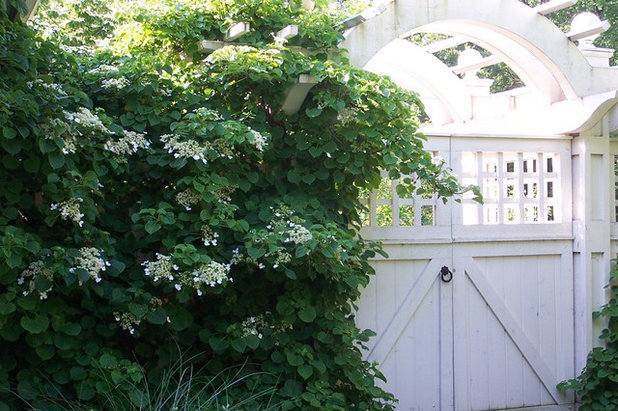
The Carter Rohrer Co.
5. Climbing Hydrangea (
Hydrangea anomala petiolaris)
An 80-foot vine is not the first thing you think of when hydrangeas come up in conversation, but that’s exactly what this species of hydrangea is. It has the familiar lace cap blooms of other hydrangeas on a fast-growing deciduous vine. It is truly stunning when in bloom. Plant it where deer are a problem and where you have a large structure to cover. It has clinging rootlets that are perfect for climbing on masonry walls — no trellis required.
Where it will grow: Hardy to minus 20 degrees Fahrenheit, or minus 29 degrees Celsius (zones 5 to 9)
Light requirement: Partial sun
Water requirement: High
Mature size: Up to 80 feet
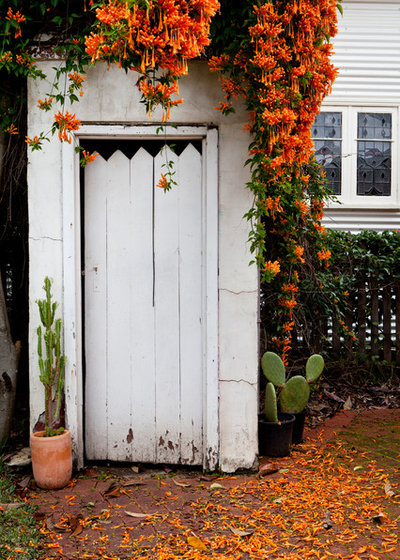
Twinkle and Whistle
6. Trumpet Creeper (
Campsis radicans)
Trumpet creeper is an extremely tough vine that is native to the eastern U.S. but will grow almost anywhere. Its 3-inch trumpet-shaped orange flowers are a favorite of hummingbirds. Trumpet creeper is extremely vigorous and should be planted with care — the tendrils are known to break apart the siding on a house and other support structures that are not built to withstand its might.
Where it will grow: Hardy to minus 30 degrees Fahrenheit, or minus 34 degrees Celsius (zones 4 to 9)
Light requirement: Full sun
Water requirement: Low
Mature size: Up to 40 feet
More A Deer Fence Can Be Decorative as Well as Protective
See how to grow more attractive flowering vines





